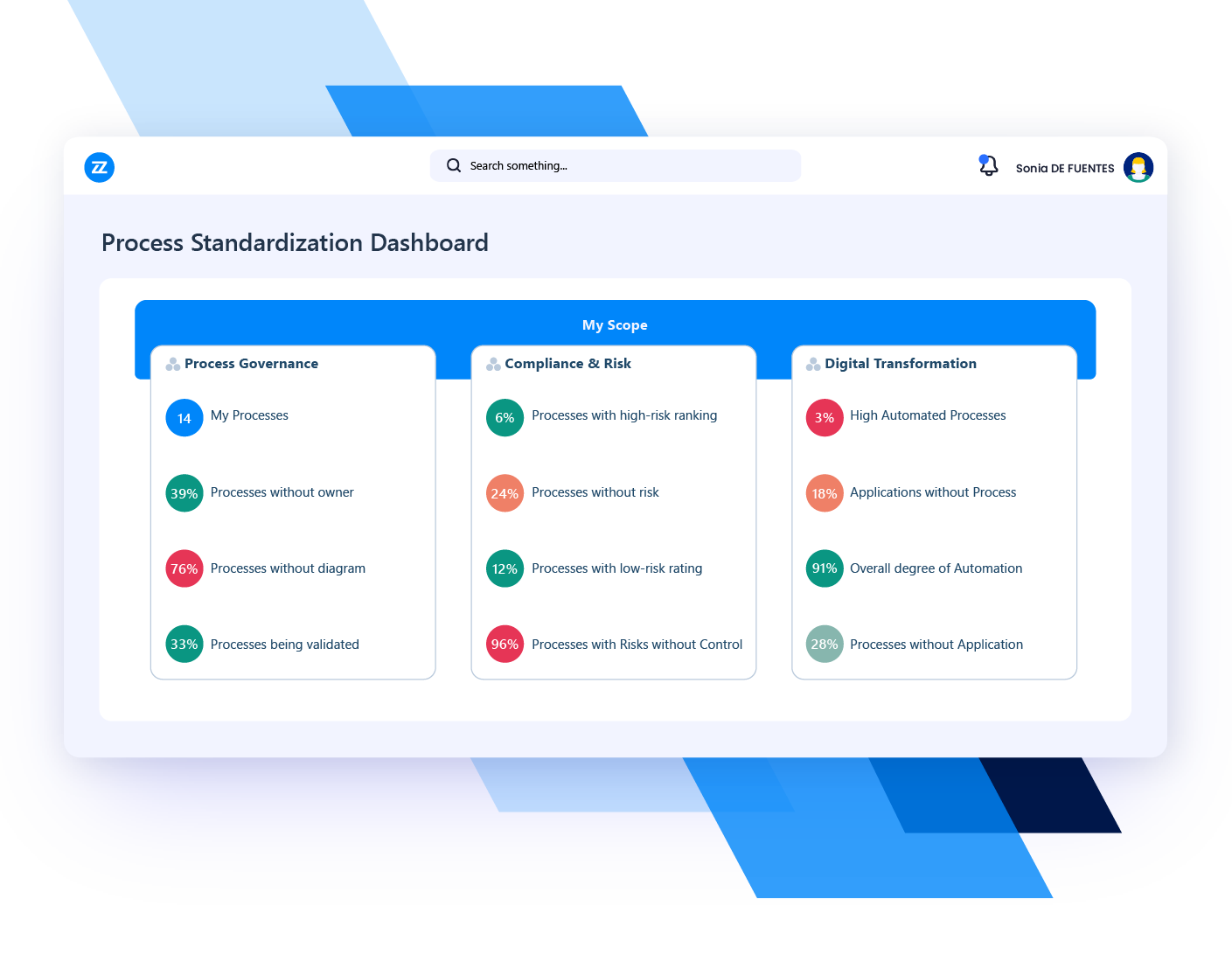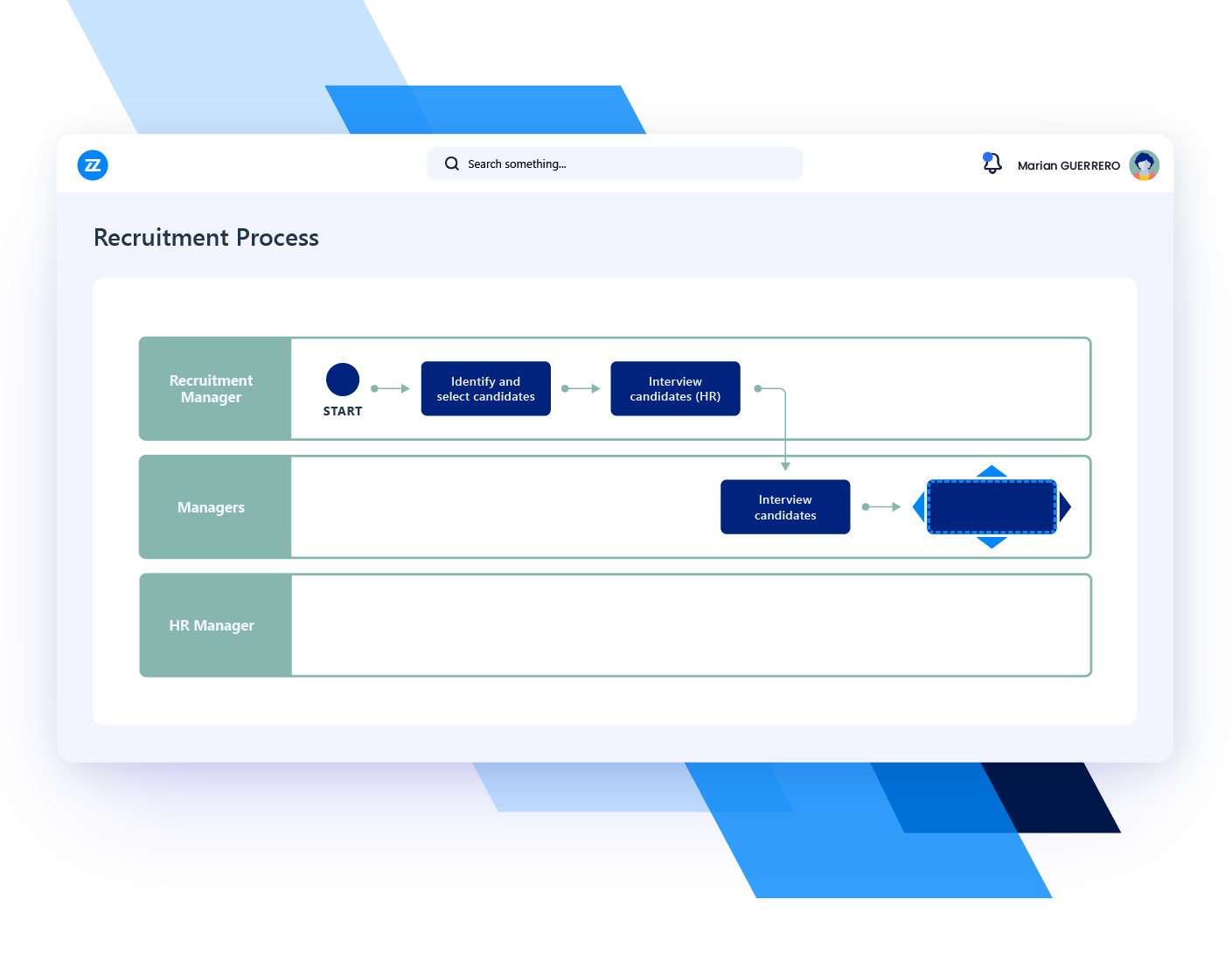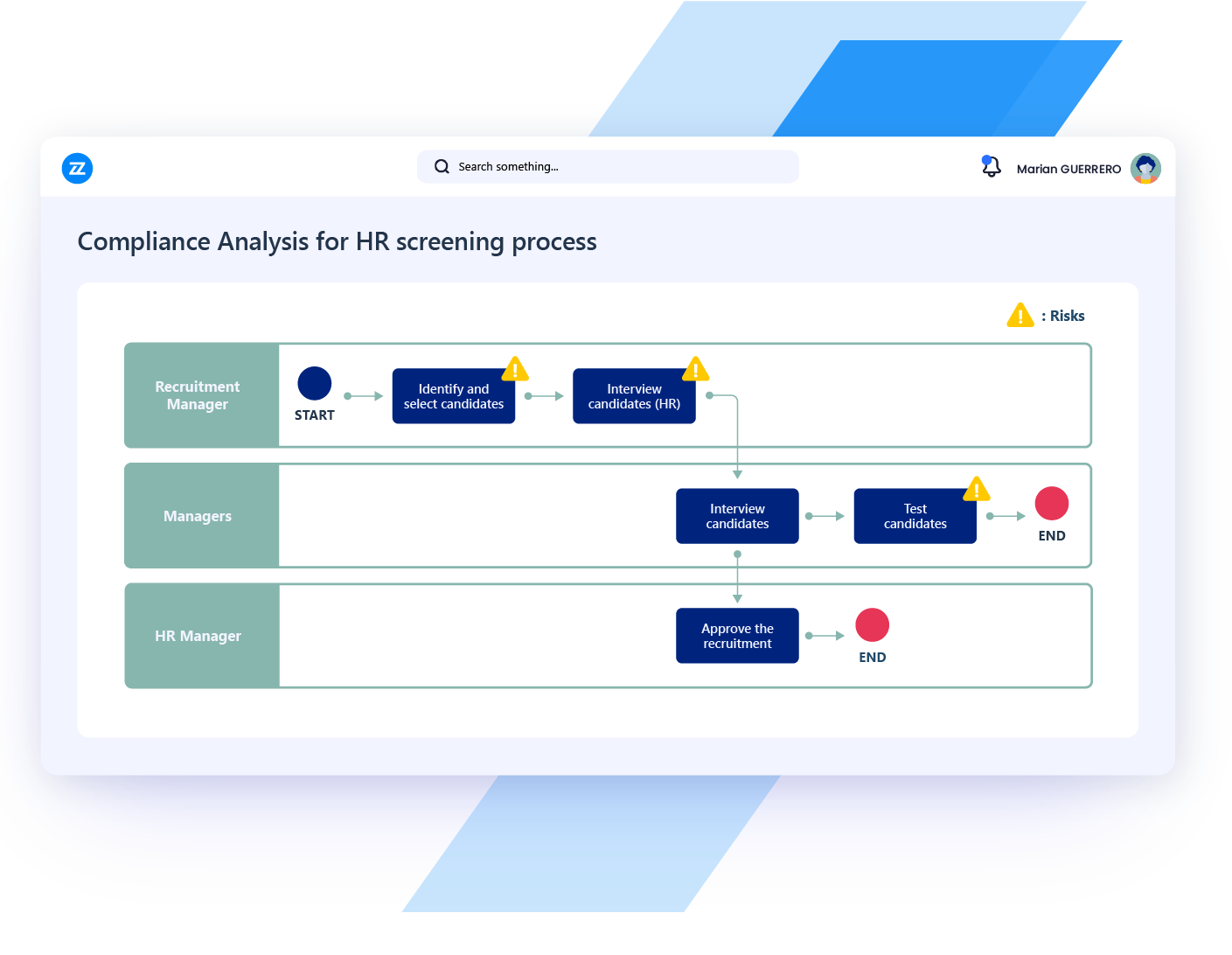Business Process Management
Achieve Operational Excellence
With Business Process Management
Boost Operational Efficiency and Resilience
Without full visibility into bottlenecks and redundant steps, value creation and customer satisfaction suffer. Business Process Management helps you model, analyze, and optimize how value flows through your organization –– cutting waste, accelerating execution, and ensuring compliance.
Make Operations Flow. Boost Performance.
- Increase visibility into core business processes and dependencies.
- Eliminate bottlenecks to accelerate execution and reduce costs.
- Improve quality and compliance with mappings to frameworks and standards.

Business Process Standardization
Drive Consistency Across Operations
- Catalog your process landscape and identify standardization opportunities.
- Define process standards and reuse best-practice models to drive consistency and standardization.
- Strengthen governance with embedded controls and visibility of deviations.

Streamline How Work Gets Done
Standardize and streamline processes to cut complexity and improve performance.


